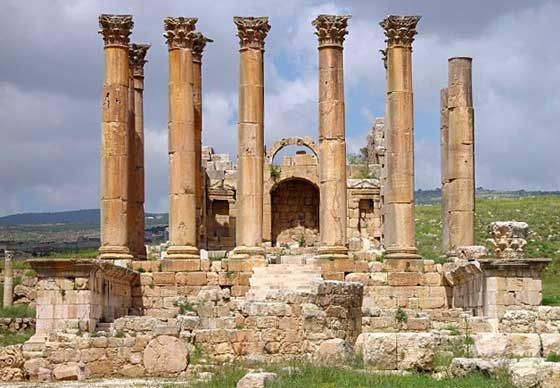
The annals of human history are replete with architectural and artistic feats that continue to amaze us to this day. From the skyscrapers that define modern city skylines to the historic monuments that tell tales of the past, human endeavor in construction and design has always been a testimony to our spirit and creativity. One list that has forever captured the imagination of scholars and tourists alike is that of the Seven Wonders of the Ancient World. These monumental structures, largely existing in the Mediterranean and Near Eastern regions, epitomized the zenith of ancient engineering and craftsmanship.
Let's embark on a journey through time and explore these wonders, with a special emphasis on the breathtaking Temple of Artemis.
1. The Great Pyramid of Giza (Egypt) Standing the test of time, the Great Pyramid is the only one of the ancient wonders still in existence. Built as a tomb for Pharaoh Khufu around 2580-2560 BC, this structure was the tallest man-made edifice for almost 4,000 years.
2. Hanging Gardens of Babylon (Iraq) Though their exact location remains a mystery, these terraced gardens are said to have been constructed in ancient Babylon, near present-day Baghdad. The gardens, possibly built by King Nebuchadnezzar II for his homesick wife, represented a verdant mountain in a flat landscape.
3. Statue of Zeus at Olympia (Greece) An enormous statue dedicated to the king of the Greek gods, this wonder was created by the sculptor Phidias. Standing around 40 feet tall, the statue was made of gold plates and ivory over a wooden frame, depicting Zeus seated majestically on his throne.
4. Mausoleum at Halicarnassus (Turkey) This tomb was built for Mausolus, a Persian satrap, and his sister-wife Artemisia II. It combined elements from Greek, Egyptian, and Lycian architectural styles, and stood approximately 45 meters in height.
5. Colossus of Rhodes (Greece) A gigantic bronze statue dedicated to the sun god Helios, it was constructed to celebrate Rhodes' victory over an invading army. Ironically, it stood for only 56 years before being destroyed by an earthquake.
6. Lighthouse of Alexandria (Egypt) Also known as the Pharos of Alexandria, this lighthouse guided sailors safely into the busy harbor of Alexandria. Constructed on the small island of Pharos, it utilized an open flame at its top as a beacon.
7. Temple of Artemis at Ephesus (Turkey) Now, let’s delve deeper into this mesmerizing marvel. The Temple of Artemis, dedicated to the Greek goddess Artemis (Diana in Roman mythology), was not just a religious sanctuary but also an emblem of grandeur and beauty. Located in the ancient city of Ephesus, near modern-day Selçuk in Turkey, the temple was rebuilt several times over centuries, each iteration grander than the last. The most famous of these, constructed around 550 BC by the architect Chersiphron and his son Metagenes, was funded by the wealthy King Croesus of Lydia.
What made this temple stand out was its sheer size and the quality of its craftsmanship. With over 127 towering columns, each standing 60 feet tall, it was adorned with fine sculptures crafted by renowned Greek sculptors. A central cult statue of Artemis, made of ebony and gold, showcased the deity adorned with multiple breasts, symbolizing fertility and abundance. This temple was not just a place of worship, but also a significant trading and economic hub, underscoring its importance in ancient society.
The Temple of Artemis met its ultimate demise in 401 AD when it was destroyed in a mob led by St. John Chrysostom. Sadly, today, only a lone reconstructed column stands at the site, hinting at the temple’s past grandiosity.
In Conclusion The Seven Wonders of the Ancient World are a testament to the remarkable capabilities and vision of ancient civilizations. While most of these structures have been lost to time, their legends live on, stirring the souls of those who seek to understand the majesty of our ancestors' achievements. The Temple of Artemis, with its awe-inspiring architecture and spiritual significance, stands out as a paragon of human ambition and reverence for the divine.
